Outdoor fire pits have become an increasingly popular addition to patios, backyards, and other open-air living spaces. Business Research Insights anticipates a compounded annual growth rate (CAGR) of 4.85%, increasing the global outdoor fire pit market value from USD 194.93 million in 2023 to USD 313.03 million in 2028.
While this growth looks promising, buyers must understand that choosing the right outdoor fire pit transcends aesthetics, as it involves considering the intricacies of material composition and design functionality, portability, safety, price, and heating efficiency.
This guide assists buyers to get an overview of outdoor fire pits and the key types available, as well as highlighting the essential considerations to ensure you are adding the best to your store in 2024!
Table of Contents
Outdoor fire pits at a glance
Types of outdoor fire pits
Key factors to consider when buying an outdoor fire pit
Recommendations for top picks
Bottom line
Outdoor fire pits at a glance
An outdoor fire pit is a receptacle designed to contain an outdoor fire. It includes features that serve as focal points, providing warmth and enhancing the ambiance in outdoor living spaces. The design construction incorporates a durable vessel that prevents the spread of the flames to nearby seating spaces.
Outdoor fire pits vary in functionality depending on the fuel source. Key components include a fuel bed, air supply channels, and gas feed pipes for gas fire pits. Heat output ranges from 20,000 to 100,000 BTUs for gas models and somewhat less for wood-burning options.
Types of outdoor fire pits
Gel fuel fire pits
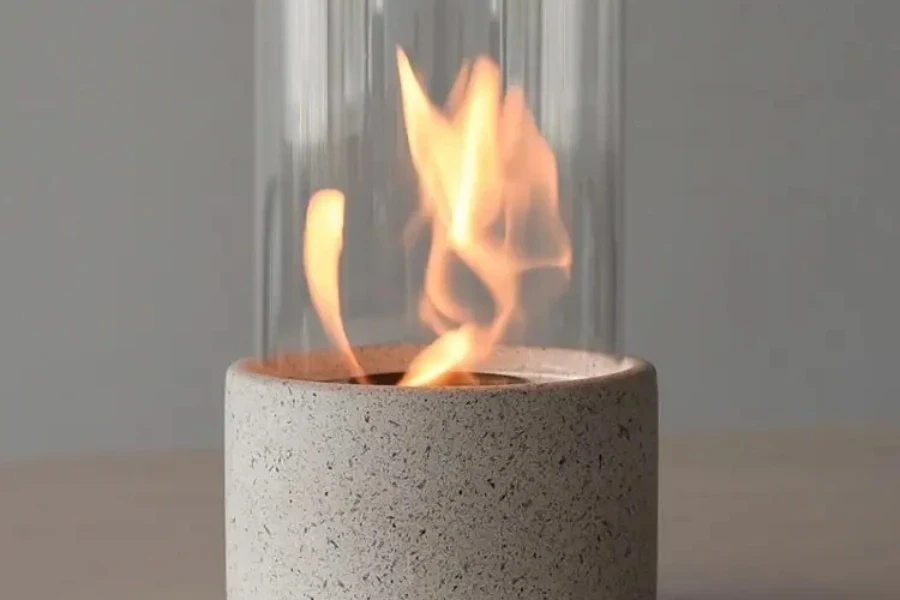
Gel fire pits are an excellent addition to outdoor living spaces, especially for users who desire a portable fireplace that doesn’t give off any smoke. Instead of burning gas or wood, this fuel model uses an ethanol-based gel stored in a can as the ignition source. Ethanol-based gel offers longer burn times than liquid fuels, giving off larger flames and more heat.
Gel fuel pits don’t require gas connections or extra power; cans can last up to three hours per fill. While the no-smoke nature means easier cleanups, gel canisters require careful handling as they are flammable.
Wood-burning fire pits

As the name suggests, wood-burning fire pits utilize wood to produce an open flame. Standard models use concrete, clay, or stone, but more advanced ones incorporate heavy-duty metals capable of withstanding extreme temperatures.
Besides having no extra maintenance costs, the contemporary design allows users to grill and cook over its flame. Although users like the crackling of wood as it burns away, wood-burning fire pits produce too much smoke, and it’s impossible to regulate the flames rapidly.
Propane fire pits
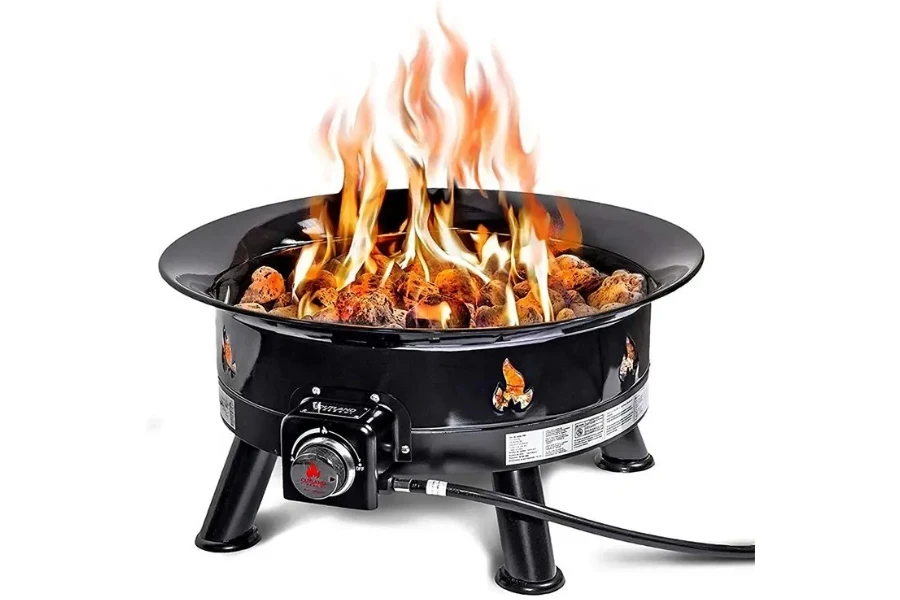
Propane fire pits leverage propane lines, tanks, and burners to produce flames. Most brands use aluminum or stainless steel since they’re lightweight and rust-resistant. Propane fire pits feature an ignition switch that allows users to control the flames rapidly.
Some trending examples of propane fire pits include copper bowl fire pits, fire pit tables, and portable designs. The only drawback is refilling the propane tanks can be pretty costly.
Natural gas fire pits
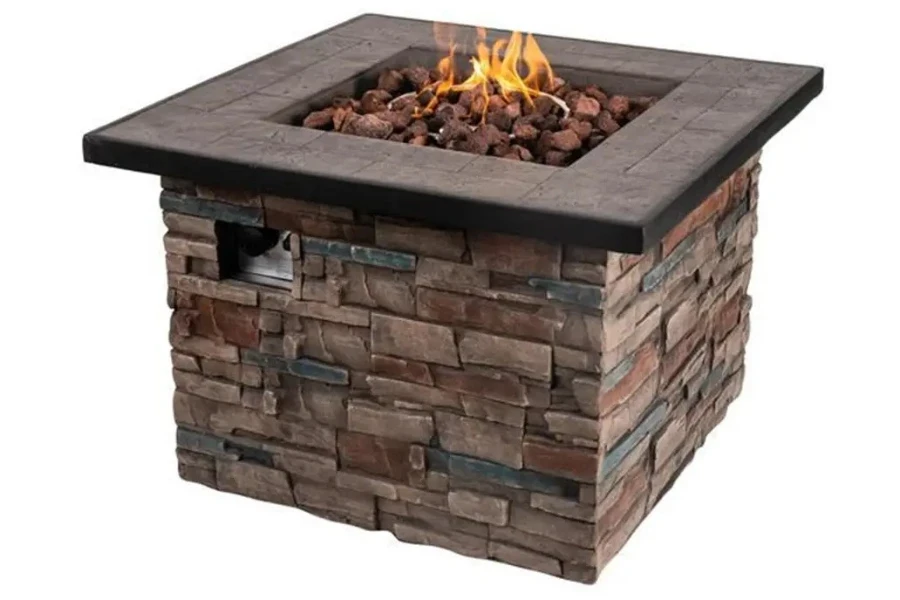
Natural gas fire pits integrate naturally into existing gas infrastructure. Materials of design are similar to those used in propane fire pits, but they eliminate fuel tank requirements. Natural gas fire pits function as semi-permanent units because of the spatial limitations requiring proximity to gas lines. Most users prefer tabletop designs, but sunken options are also worthwhile.
Key factors to consider when buying an outdoor fire pit
Size and shape
Outdoor fire pits come in different sizes and shapes. The perfect size depends on the available space and the number of users. Larger diameters (4+ feet) accommodate group gatherings and are ideal for large open spaces. Smaller units in the 3-foot range are more portable.
The ideal ground clearance is between 12 to 14 inches tall, but users can go as low as 6 inches if they want to accommodate their legs. Choose a rectangular or square fire pit if you want better alignment with the patio and backyard landscaping.
Portable or permanent?
Portable fire pits utilize propane or gel fuel, giving homeowners a flexible and hassle-free transport and setup. These units don’t require integration with existing HVAC systems since they serve short-term needs.
Permanent fire pits are more advanced, often demand expert knowledge during installation, and usually integrate with a home’s heating and cooling system. Before installing a permanent fire pit, ensure it complements the outdoor aesthetics.
Safety features
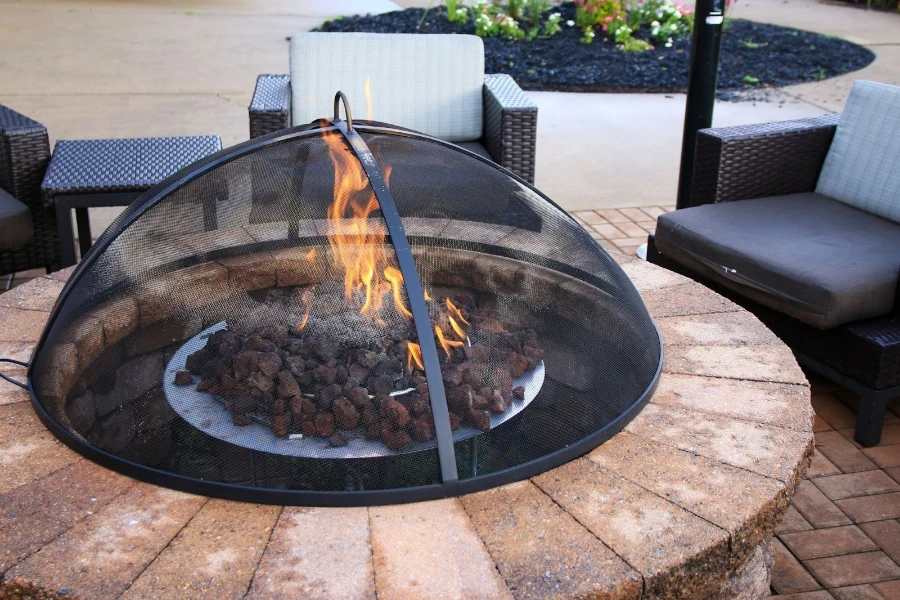
Premium outdoor fire pit manufacturers always prioritize safety features in their designs. Look for a fire pit with mesh screens or covering to prevent the uncontrolled spread of flames while still allowing heat and light to pass through.
Consider units with emergency shut-offs, especially when using natural gas or propane tanks. Portable fire pits should include insulated grip handles to provide an extra buffer when moving contained fires.
Aesthetic appeal (classic style or modern fire pit?)
Outdoor fire pits are available in different designs to suit different aesthetic desires. Homeowners with contemporary backyards can go for sleek and modern fire pits incorporating features like streamlined silhouettes or contrasting finishes.
Classical options are ideal for homes with heavy masonry like textured concrete or stacked weathered bricks.
Costs and maintenance requirements
Permanently installed and handcrafted outdoor fire pits fall into higher budget categories, given the cost of materials and specialized labor. Portable units are more affordable and don’t usually demand extra maintenance. Consumers should consider the long-term upkeep efforts when evaluating costs.
Local laws
Some jurisdictions demand permits before constructing outdoor fire pits to enforce compliance with safety codes and zoning restrictions. For instance, some local ordinances have specific hours of operation to reduce smoke pollution, especially in residential areas. Always research if it’s a prerequisite to have these permits and opt for lesser restrictive options if the codes don’t favor you.
Recommendations for top picks
Best portable outdoor fire pit: NICE GAIDEN outdoor fire pit
The NICE GAIDEN outdoor fire pit is an exceptional portable fire table perfect for transforming backyards into ambient entertainment spaces. This unit packs a robust 50,000 BTU propane burner with ample heating coverage to accommodate 6 to 8 people within its heat radius. The sturdy rectangular frame and tabletop construction combining aluminum alloys and iron materials can hold more than 300 pounds of weight dispersed across the table.
Under the pit is a sliding rail that makes it possible to tuck away the propane tank discreetly. On one side, an auto-ignition button ensures safety when turning on the fire pit, while the ignition knob gives users control over the size of the flames.
Best tabletop outdoor fire pit: XPIC outdoor fire pit
The XPIC outdoor fire pit brings forth a refined, rounded silhouette marble tabletop that exudes elegance, perfect for elevating patio designs. The quality and durability of the fire pit shine through its high-quality steel construction.
Operation is seamless with the auto-ignition feature that eliminates manual ignition using a match stick. Below the table, there’s sufficient space to accommodate a standard propane tank. The marble and steel construction embodies a minimalistic look despite a classy fire pit.
Most durable outdoor fire pit: AHL stainless steel outdoor fire pit
The AHL stainless steel outdoor fire pit impresses with durability. This fire pit incorporates heavy-duty construction that can withstand year-round weather elements. Unlike the other models in this list, AHL combines weather-resistant Corten steel with rust-proof stainless steel, guaranteeing exceptional structural integrity.
Buyers can opt for a permanent natural gas setup or a propane tank that goes under the table. This versatility also extends to the shape of the fire pit, with options to choose either a rectangular design or a round model. Performance-wise, expect up to 50,000 BTU output from a subtle setting.
Bottom line
Choosing the perfect outdoor fire pit demands careful evaluation of safety features, aesthetics, existing laws, portability, and sizing. Identifying priority considerations makes navigating the wide selection of outdoor fire pits from different brands easier. While some brands focus on aesthetics, others excel in quality and durability.
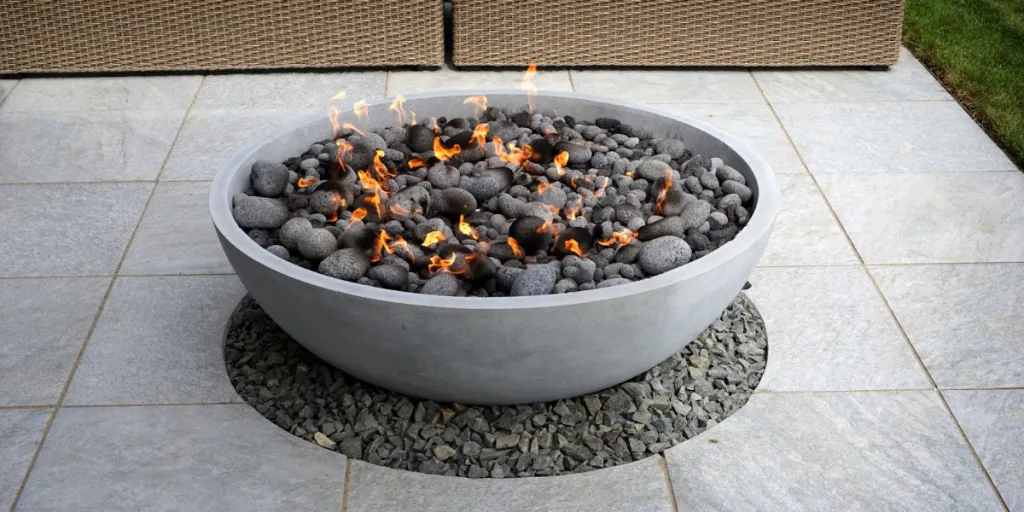




 বাংলা
বাংলা Nederlands
Nederlands English
English Français
Français Deutsch
Deutsch हिन्दी
हिन्दी Bahasa Indonesia
Bahasa Indonesia Italiano
Italiano 日本語
日本語 한국어
한국어 Bahasa Melayu
Bahasa Melayu മലയാളം
മലയാളം پښتو
پښتو فارسی
فارسی Polski
Polski Português
Português Русский
Русский Español
Español Kiswahili
Kiswahili ไทย
ไทย Türkçe
Türkçe اردو
اردو Tiếng Việt
Tiếng Việt isiXhosa
isiXhosa Zulu
Zulu